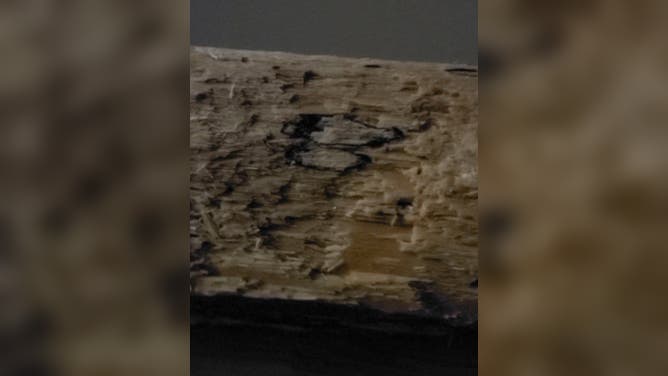Lunar eclipse reveals surreal glowing fungus on Washington beach
It wasn't some nuclear accident or extra-terrestrial sludge; instead, it was bioluminescent fungus!

A fungus glows green on a dead tree along Washington's Kalaloch Beach on Nov. 19, 2021.
(Matt Nichols Photography)
FORKS, Wash. -- A photographer went out to the beach along the Washington coast to capture the eerie sight of the lunar eclipse Friday morning but instead was treated to something even spookier that looked like something straight out of Ghostbusters: Glowing green blobs on a log.
It wasn't some nuclear accident or extra-terrestrial sludge; instead, it was bioluminescent fungus! Also generally known as "foxfire."
Matt Nichols spends many nights in the pitch dark on the sands of Kalaloch Beach looking for bioluminescent algae that give off a faint blue glow in the water if the conditions are just right.
Early Friday morning, he was out there in the dark trying to capture a glimpse of the lunar eclipse, only the weather wasn't playing along.
"I realized the clouds were not going to give me a view (of the eclipse)," Nichols told FOX Weather. "So, I pointed my camera toward the ocean, hoping the peak of the eclipse would block out enough moonlight to see if there was any bioluminescence in the water."
LEARN: Glowing review: Exploring the beauty of bioluminescence
There was no blue in the water, but as soon as the moon went dark, he says he saw things glowing on the beach.
"At first, I thought someone left lanterns," he said. "Then upon further investigation, I found it was a bioluminescent fungus growing all over some of the driftwood that had washed up from the storm!!"
The northern Washington coast had recently been battered by twin Bomb Cyclones earlier in the month, then weathered back-to-back atmospheric rivers last week.
"It looked like something straight out of 'Avatar,' " Nichols said. "They were glowing bright green, extremely visible to the naked eye." He said he spent more time going down the beach finding more logs glowing green "like a glow stick," he said.
Nichols noticed the glowing green fungus seemed to need similar dark conditions as the bright algae to be seen.

The off-white ovals surrounded by black is fungus on a dead log along the beach that glows green under the right circumstances.
(Matt Nichols Photography)
"As soon as the eclipse was over, and the moon was shining bright again, I could no longer see the logs glowing," Nichols said. "It was such an amazing reward for a failed attempt at capturing the lunar eclipse."
Nichols has sent a fungus sample to a mycologist to identify and get more information about this glowing phenomenon.